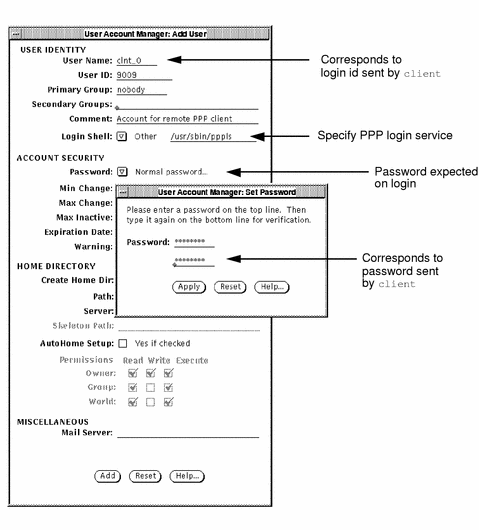Running PPP over PAD over X.25
The packet assembler disassembler (PAD) enables a machine to communicate over an X.25 packet switched data network (PSDN). It assembles outgoing packets so they can be forwarded over the PSDN, and disassembles incoming packets so they can be read by the remote machine.
A Solstice PPP server can be configured to accept incoming PAD calls. In the following example, a server running Solstice PPP and SunLink X.25 9.0 or later, uses the PAD emulator to receive packets sent by a PPP client.
Figure 5-9 Running PPP over PAD over X.25

There is no special configuration needed for SunLink X.25. It must be configured to accept incoming PAD calls, and, in this example, the default X.3 profile for SunLink X.25 was used.
Solstice PPP sees the PAD as a normal serial line. You do not need to configure the serial line for Solstice PPP, since the PAD configuration takes care of this; therefore, you do not need a corresponding entry in the link configuration file (link.conf). This file must exist, however, if Solstice PPP is to start correctly.
The standard maximum receive unit (MRU) for IP running over X.25 is 576. For optimum performance, set this value using the lcp_mru keyword in the dialup_path definition in the PPP path configuration file (ppp.conf).
As for all Solstice PPP server configurations, you must also create a user account for the incoming connection.
PPP Configuration File (ppp.conf) for server:
ifconfig ipdptp0 plumb
ifconfig ipdptp0 server client netmask 255.255.255.0 down
dialup_path
ip_interface ipdptp0
expect_login_id clnt_0
lcp_mru 576
|
User account on server used to accept calls from client:

- © 2010, Oracle Corporation and/or its affiliates
